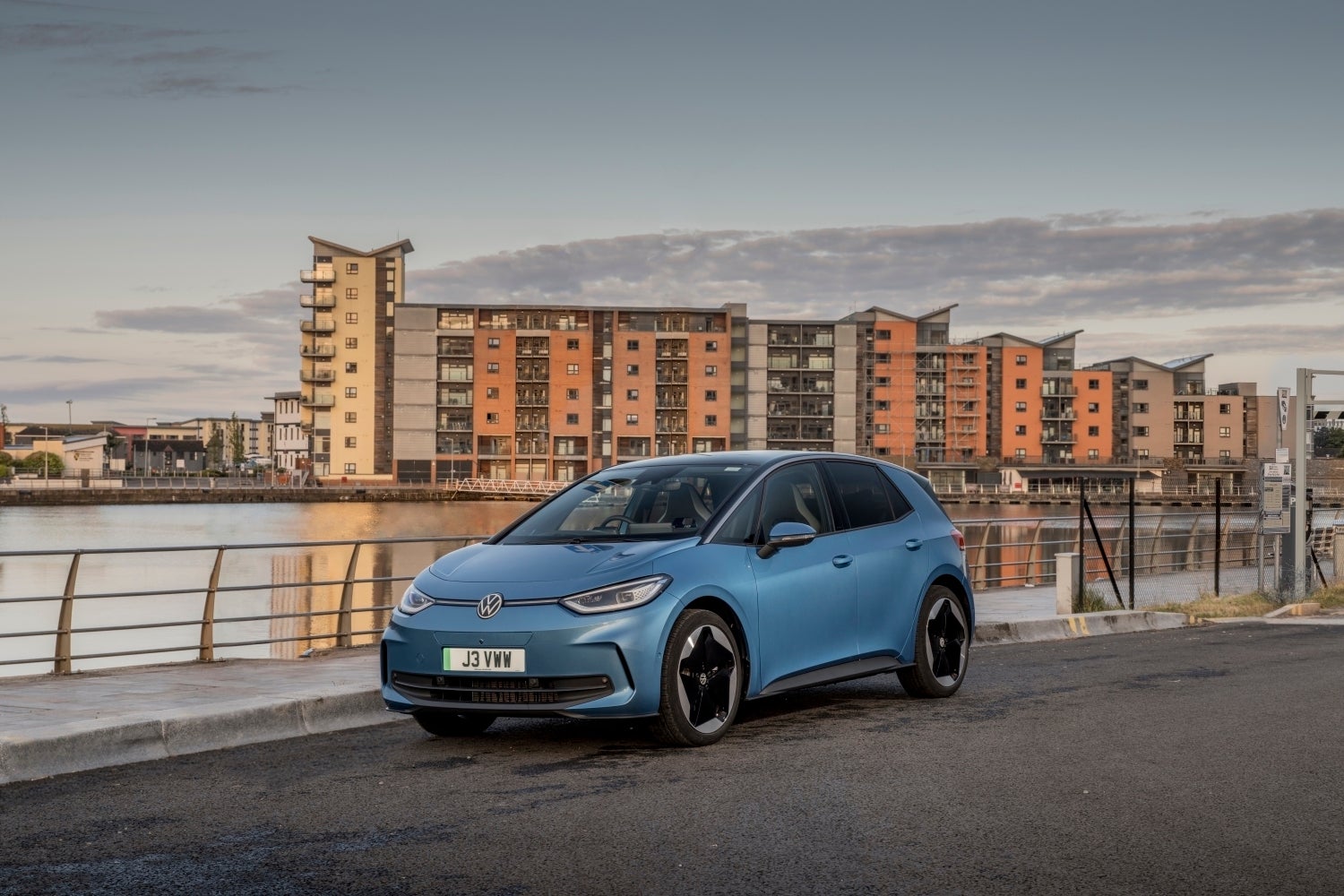
It has been said before; still it’s worth repeating: everything you saw and touched when seating yourself in any Volkswagen once made you think “I want to buy this car”. Then the company did the unthinkable. It threw away almost all the great things and made it obvious that the money it allotted to the interiors of new models had been ruthlessly slashed. Yet the cars remained expensive.
The ID.3 was about the worst example of this self-harming period in VW’s history. And the really maddening thing? The model itself, after an early period of glitchy software being sorted out, was potentially one of the best EVs on the market. Certainly it looked the part, went well, had a state of the art new RWD chassis and the most extraordinarily roomy interior.
First MEB Volkswagen and first for a new interior concept
Aside from the all the terrific stuff, there was just the one serious issue: a major rethink on how the company designed the dashboard and every component which the fingers touched. Where once there had been delights everywhere, now it was shiny plastics which showed where those fingers had made contact. Equally strange, loud and unwanted greeting/exit sounds were added. But worst of all, seemingly all functions were banished to a central screen.
Clearly, much of the new-style stuff needed ripping out and the old style insides of a VW brought back. Only that was never going to happen. Instead, the hardware has been modified and the software redone. The result? A greatly improved ID.3 which gives us hope for the company’s truly new next generation models in the size classes above and below this one.
If it reads as if I am being too hard on Volkswagen, the fact of the matter is that the marque went out of its way to self-harm, discarding a hard-won reputation for interiors excellence.

US Tariffs are shifting - will you react or anticipate?
Don’t let policy changes catch you off guard. Stay proactive with real-time data and expert analysis.
By GlobalDataAn almost perfect exterior (i.e. it used to be)
Now, happily, there are strong signs that better days are ahead. The first one being that not much has been altered on the outside of the car. The back end still has all that lovely black detailing, the windows are big, there is no fussy-decorative trim. Just wonderful elegance and minimalism. You can even turn off the wretched heart-beat thud (is that what it is supposed to be?). Which is almost as awful as the ghastly chimes which bedevil most Kias.
Back to the good stuff: the engineering in the remains fantastically 2020s. A rear-wheel drive platform, a tight turning circle, tyres seemingly at the extremes of the overall footprint and more room inside than a Golf. Remember, the ID.3 is smaller. OK not by that much, and the layouts are quite different due to an engine up front versus a motor below the boot and battery under the passenger compartment. It also has quite engaging steering, excellent ride comfort (long wheelbase plus more weight) and will even spin its tyres on gravel without you trying.
What about the range? Ah yes. It was fairly cold during my week with the car so I suppose circa 200 miles between charges was fine. As with a liquid-fuel vehicle, much depends on how the driver’s right foot behaves, along with the use of heating plus warmth for the front seats and steering wheel.
Conclusion
Even with the fall in sales of electric cars in general during December, the ID.3 did fairly well for 2023 as a whole. In fact two Volkswagens were among the top-ten best-selling EVs in Britain: the ID.3 in sixth place (10,295), well ahead of the ninth-placed ID.4 (8,495). That surely augurs well for 2024, particularly with the updated car being such a strong improvement over the model launched back in 2020.
Next developments
Will there be a four-wheel drive GTX or GTI with the same 245 kW combined power as the ID.X concept from almost three years ago? Volkswagen did state back in March 2021 that this car was intended not for production but more of a technology showcase. A shame that, particularly as performance would be brisk given the claimed 200 kilo weight reduction, even with what was a bigger 82 kWh battery.
Prototypes of a faster ID.3 keep being spotted, leading to speculation that some sort of production model will arrive later in 2024. Will it be rear-drive though? That is supposedly the case but Volkswagen is yet to even mention this car officially. There will surely be more power thanks to the Group’s latest AP550 motor as specified for the ID.7 and many other electric models.
A successor in 2028, or not?
After the arrival of the faster variant and perhaps some tweaks to the line-up in 2025/2026, Volkswagen will then inevitably leave the car alone until around 2028. It should not be assumed that there will be a second generation though. That’s because the next Golf – highly likely to also be 4.3-4.5 m long and confirmed as electric-only – is due around the same time.
Perhaps then, a potential ID.3, if it gets approved by the Volkswagen board, might become a sort of new-generation Golf Plus, i.e. taller and more crossover-like, based, like the Golf Mk IX, on the SSP platform.
The as-tested Volkswagen ID.3 Pro is priced from GBP37,115 in 58 kWh form (with a 150 kW (204 PS) and 310 Nm (229 lb-ft) motor. Top speed is 99 mph and 0-62 mph takes a stated 7.4 seconds. The maximum WLTP Combined range is up to 266 miles and maximum DC charging is at 120 kWh. A 77 kWh battery – also a net capacity – remains available for more expensive variants. Its WLTP max is 347 miles.


